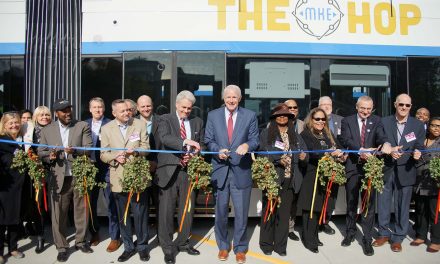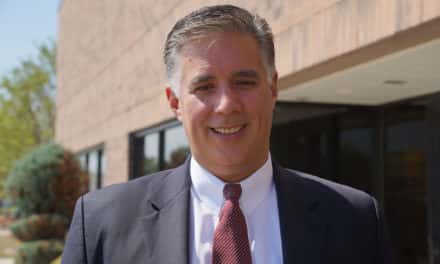
Governor Tony Evers announced a new plan on August 23 to provide support to working families and address rising costs due to national inflation.
The governor’s announcement comes in anticipation of new revenue projections, set to be released by the Wisconsin Department of Revenue (DOR), which are expected to far exceed estimates from the beginning of the year. Wisconsin will end the fiscal year with more than $5 billion in state coffers, including having the highest-ever positive GAAP balance in state history of $1.2 billion for the 2021 fiscal year, and the state’s “rainy day” fund at the highest level ever at $1.7 billion.
This year, the nonpartisan Legislative Fiscal Bureau (LFB) projected the state would end the biennium with a $3.8 billion revenue surplus, nearly $2.9 billion more than was expected in June 2021. Governor Evers’ plan builds on the program he announced earlier this year, using the state’s historic projected surplus to cut taxes for working families, veterans, and seniors, reduce gas prices by repealing the minimum markup law, cap copays for insulin, and reduce barriers to filling jobs by making childcare more affordable and providing a Caregivers Tax Credit.
“Wisconsin families have been through a lot over the past few years, and we know that while our state and economy continue to recover, folks are still worried about rising costs and making ends meet,” said Governor Evers. “My plan to use our state’s latest projected surplus builds on our work to cut taxes for working families by providing more than $600 million in tax relief while capping the copay cost of insulin, lowering prices at the pump, and helping defray the cost of childcare and caregiving to help reduce barriers to entering our workforce.
In anticipation of new revenue projections from DOR that are expected to exceed the already unprecedented projections, the governor is again renewing his call to use the state’s $3.8 billion revenue surplus to provide a 10 percent tax cut for working families, restore the Homestead Tax Credit to help seniors on fixed incomes, expand property tax relief for veterans with disabilities, cut gas prices for Wisconsinites and cap the copay cost of insulin, and create a Caregiver Tax Credit, as well as expand the Child and Dependent Care Credit to help with the costs of caregiving and childcare.
“Our state is in a strong fiscal position, and there is no reason these dollars should sit in state coffers when families need help now,” Governor Evers said. “We can help lower out-of-pocket costs for Wisconsinites today while providing long-term tax relief and still making sure we have readily available state resources to invest in our priorities in the next state budget.”
In total, Governor Evers’ expanded plan provides over $600 million a year in tax relief now and into the future for Wisconsinites. The strength of additional tax collections for the 2021-22 fiscal year alone are expected to substantially exceed the annual tax relief under the governor’s expanded plan. It also leaves the prior anticipated excess balance for the biennium of $3.8 billion completely untouched, providing readily available state resources to respond to pressing state needs in the next biennial budget as well.
PROVIDING LONG-TERM TAX RELIEF FOR WORKING FAMILIES
FAIR Credit 10 percent Tax Cut
The governor’s plan provides a 10 percent tax cut for working families, which includes single filers at or below $100,000 in annual adjusted gross income and married-joint filers at or below $150,000. The credit would gradually phase out for single filers with adjusted gross incomes between $100,000 and $120,000 and married-joint filers with incomes between $150,000 and $175,000.
With the governor’s tax cut, the average recipient of the Family and Individual Reinvestment (FAIR) income tax credit will see a $221 annual reduction in their individual income taxes and the median family of four will receive an annual tax cut of more than $375. That will be approximately $441 million annually, beginning in fiscal year 2022-23, going back into Wisconsinite’s pockets.
Governor Evers’ efforts over the past several years to cut taxes for hardworking Wisconsinites. Previously, he directed DOR to revise its withholding tax tables, which affects how much income employers withhold from an employee’s paycheck in taxes. Based on the directed changes and tax cuts Governor Evers has signed into law during his time in office, over the course of this year, a single filer making $50,000 will see $551 more in their paychecks while a married couple each earning $50,000 combined will see over $1,200 more for their household in their paychecks.
Additionally, the 2021-23 budget contained one of the largest tax cuts in Wisconsin state history and provided $2 billion in individual income tax relief over the biennium and approximately $1 billion annually going forward. When combined with prior reductions, the 2021-23 budget provided tax relief to 2.4 million taxpayers. Through the governor’s tax cuts signed during his time in office, 86 percent of Wisconsin taxpayers will see an income tax cut of 15 percent or more, more than delivering on Governor Evers’ promise to provide a 10 percent tax cut to middle-class families.
Homestead Credit
Governor Evers’ plan provides tax relief for low-income seniors on fixed incomes by increasing the income limit for the Homestead Credit and restoring indexing for inflation to preserve the credit’s value.
Over the years, Wisconsin Republicans have eroded the value of the state’s Homestead Credit, which provides critical tax relief for low-income seniors and individuals with disabilities, by failing to adjust the credit for inflation. In fact, the Homestead Credit has nott been adjusted for inflation since tax year 2011, causing the Credit’s beneficiaries to decline as the credit loses value due to inflation.
The governor’s plan restores the Homestead Credit by increasing the income limit to $35,000 from the current law of $24,680. The governor’s proposal also restores indexing for all parameters of the Homestead credit to preserve the credit’s value for its recipients, especially elderly claimants who make up approximately one-third of all Homestead claimants.
Veteran and Surviving Spouse Property Tax Credit
The governor’s plan expands eligibility for the Veterans and Surviving Spouses Property Tax Credit to support the needs of our nation’s heroes and their families to include those with a disability rating of at least 70 percent instead of the current law of 100 percent. This update will provide approximately $16 million in property tax relief to more veterans with disabilities and surviving spouses.
The tax credit is based on the veteran’s service-related disability rating. For example, if a veteran has a disability rating of 70 percent, they will see a 70 percent property tax credit, freeing up other limited income for household needs and essentials. It is estimated that nearly 8,000 taxpayers will benefit from this change.
LOWERING OUT-OF-POCKET COSTS
Minimum Markup
The governor’s plan targets the rising cost of gas by repealing the state’s minimum markup law for motor fuel, which requires gas to be marked up from cost. Recently, the cost of this markup has been costing Wisconsin drivers an additional 18 to nearly 30 cents. With changes under the governor’s plan, gas stations could immediately drop prices by removing this markup, which latest estimates put at nearly 30 cents.
Calling for the repeal of the minimum markup for motor fuel adds to the governor’s previous actions to keep gas prices low for Wisconsinites, including urging congressional leadership to pass The Gas Prices Relief Act, which would suspend the federal gas tax, and the Transportation Fuel Market Transparency Act, which would increase transparency in petroleum market pricing and protect consumers from price manipulation in fuel markets.
Governor Evers also called on the federal Environmental Protection Agency (EPA) to grant a temporary waiver allowing blended fuel to be used and supporting the year-round sale of E15 fuel, which the Biden Administration agreed to do, and the EPA continues to issue temporary waivers allowing the sale of E15. Additionally, the governor called on the EPA to waive the federal reformulated gas requirements for six Wisconsin counties, including Kenosha, Milwaukee, Ozaukee, Racine, Washington, and Waukesha through the end of the year which could save consumers in these counties more than 30 cents per gallon. Finally, the governor issued Emergency Order #170, prohibiting price gouging of gas and diesel.
Insulin Copay Cap
The governor’s plan would cap the cost-sharing of insulin at $35. According to the American Diabetes Association, 439,000 adults in Wisconsin have diagnosed diabetes, an estimated 135,000 individuals have diabetes but don’t know it, and 1.6 million Wisconsinites have prediabetes. Moreover, a quarter of insulin users said cost impacted their insulin use with folks often rationing their medicine, compromising their health and risking serious health consequences, including death, to avoid high costs.
The Governor’s Task Force on Reducing Prescription Drug Prices also recommended statutorily limiting the copay an insurer can charge for a month’s supply of insulin, citing that a copay cap offers immediate financial relief to people with diabetes who require insulin. As of July 2022, at least 21 states have passed legislation to implement an insulin copay cap, including Wisconsin’s neighbors in Illinois and Minnesota. Yet, despite multiple opportunities to do so, including the governor’s 2021-23 biennial budget proposal, Wisconsin Republicans have failed to cap the price of insulin in Wisconsin, putting the physical and financial health of more than 430,000 Wisconsinites with diabetes at risk.
REDUCING BARRIERS TO WORK
Caregiver Tax Credit
In addition to measures aimed at addressing rising costs, Governor Evers’ plan also includes additional provisions aimed at reducing the costs for childcare and caregiving—key proposals to help support Wisconsin’s workforce and reduce barriers to employment.
Governor Evers’ plan helps defray the cost of caregiving by creating a caregiver tax credit for qualified expenses incurred by a family caregiver while caring for their loved one, providing nearly $100 million in relief for an estimated 250,000 Wisconsinites. A majority of Wisconsinites are in income ranges to be eligible for the credit, and most filers will receive up to $500, while married-separate filers will receive up to $250.
The governor’s plan would provide an estimated $100 million in tax relief to Wisconsinites who are experiencing increased costs and expenses caring for a family member. The governor originally proposed creating the Caregiver Tax Credit in his 2021-23 biennial budget and again, proposed it as part of his plan to use the state’s surplus earlier this year, but both moves were rejected by Republicans in the Legislature.
Child and Dependent Care Credit
Governor Evers’ plan proposes expanding the newly created Child and Dependent Care Credit from 50 percent of the federal credit to 100 percent. This will provide nearly $30 million in tax relief to 107,000 Wisconsinites who claim the federal credit, or about $274 per filer.
Most people who are eligible for the credit could receive up to $600 if they are claiming it for one qualifying individual’s expenses or $1,200 for two or more qualifying individuals’ expenses. Much like the Caregiver Tax Credit, the governor proposed expanding the Child and Dependent Care Credit earlier this year, but it, unfortunately, was rejected by Republicans in the Legislature.
© Photo
Mаrchеllо74 and Nаgеl Phоtоgraphy















